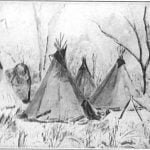
Friedrich Kurz, born in Bern, Switzerland, 1818; died 1871. At the suggestion of his friend Karl Bodmer, he came to America in 1846, for the purpose of studying the native tribes, intending to prepare a well-illustrated account of his travels.
He landed at New Orleans and reached St. Louis by way of the Mississippi. The trouble with Mexico had developed, and for that reason instead of going to the Southwest, to endeavor to accomplish among the tribes of that region what Bodmer had already done among the people of the Upper Missouri Valley, he decided to follow the route of the latter and ascend the Missouri to the Rocky Mountains. But although his plans were changed he did not become discouraged, and on October 28, 1851, entered in his journal ” My plan is still for the gallery, I shall have lots of correct drawings.
Cholera raged along the upper Missouri in 1851, and for that reason Kurz was unable to remain at Fort Pierre. However, he reached Fort Berthold July 9, 1851. Later he continued to Fort Union at the mouth of the Yellowstone, where he remained until April 19, 1852.
Returning, he reached St. Lois May 25, thus covering the distance from the mouth of the Yellowstone in five weeks and one day. He arrived in Bern during September of that year and was soon appointed drawing master in the schools of his native city, a position which he held until his death.
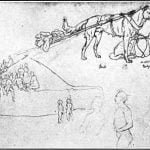
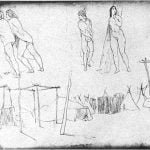

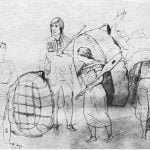
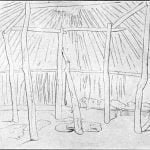
During the winter of 1851-52, while Kurz was at Fort Union, a German artist of some ability was with the Oto and Omaha near the banks of the Missouri. H. Baldwin Müllhausen, late in the autumn of 1851, became lost on the frozen, snow-covered prairies south of the Platte, and was rescued by a family of Oto encamped on the hank of a small stream. He remained with the Oto and later returned with them to their village near the mouth of the Platte. From the Oto village he went up the Missouri to the Omaha, with whom he stayed some weeks. While with the two tribes he made many sketches of the Indians and scenes depicting the ways of life of the people. When he returned to his home in Berlin he carried with him the collection of drawings, and these, if found at the present time, would probably prove of much interest.
